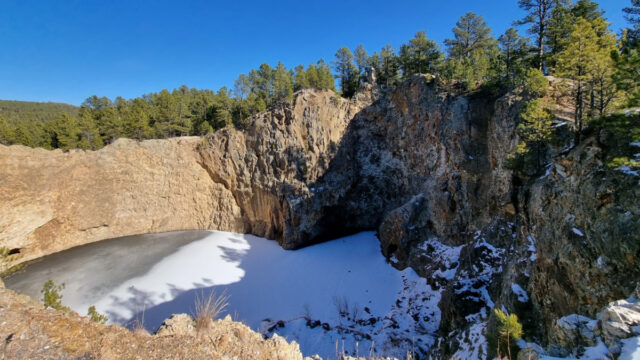
- The Black Hills of South Dakota is undergoing a lithium rush by explorers looking to feed US domestic demand
- Iris Metals, Midwest Lithium, United Lithium and Patriot Lithium are main landholders
- Midwest Lithium capital raise is now open for their planned ASX listing in October
Stockhead’s Jurisdiction Spotlight column delves into prospective lithium regions around the world, highlighting what makes the geology stand out and who’s exploring in the area.
The Black Hills mining region of South Dakota is perhaps best known for its rich gold deposits like Homestake, where 44Moz was mined over 100 years.
But, until recently, most people wouldn’t have been aware of its history as one of the largest producing lithium districts in the world from the late 1800s to the mid to late 1900s.
It is not one of those lithium districts previously mined for its tin or tantalum – this was a true lithium mining district. That means the geology and metallurgy is well understood.
It also boasts the largest spodumene crystals (~6% lithium) in the world.
How big? The Etta mine — at times the main source of spodumene in the world — yielded the largest (up to 15m long, weighing 90 tonnes) spodumene crystals ever mined.

All up, there are over 24,000 mapped pegmatites in the Black Hills.
Then there’s the infrastructure. 80% of all the power in South Dakota comes from renewable sources, making Black Hills lithium production some of the cleanest in the world with very low carbon intensity.
Aspiring producers can also just load a train at Rapid City 20 minutes away, transporting lithium rich spodumene concentrate to US based convertors for less than US$100/t.
Roads, clean power, an experienced workforce, and massive spodumene crystals – it’s all there.

The lithium-caesium-tantalum (LCT) pegmatite occurrences in the Black Hills cluster around the Harney Peak Granite intrusion, forming a ‘halo’-like structure.
Projects between two to five kilometres from the border of Harney Peak hold prime position, being in the right temperature pressure zone for lithium bearing mineral crystallisation.
As interest in lithium runs red hot the Black Hills has once again found itself at the heart of another pegging rush.
Following a short flurry of activity, the best ground around the Harney Peak Granite is now tightly held by a handful of explorers: Iris Metals (ASX:IR1), soon-to-be-listed Midwest Lithium (ASX:MWL), Patriot Lithium (ASX:PAT), and TSXV-listed United Lithium.
The Black Hills pegging war

A March 2022 lithium ‘pegging war’ in the Black Hills resulted in three of seven companies battling for ground going home with nothing, according to Midwest Lithium executive chairman Rodrigo Pasqua.
In the US explorers can’t just request a tenement online. Instead, they must stake nine posts on the ground for each claim.
“We sent our crew out as the snow started to melt – by this time we knew Iris had already been staking claims for a few weeks,” Pasqua says.
“A lot of people were hammering posts. We have now 1,100 claims – Iris has more.
“It cost a lot of money, but we had to be quick — it was a good thing we had all the paperwork lined up, we got lucky.”
Midwest, Iris, Patriot and United scored ground. The rest went home with nothing.
Frontrunner Iris completed its strategic acquisition of White Rock LLC and its hard rock lithium projects in 2022 and has since uncovered multiple, wide, high-grade, and shallow lithium intersections at the Beecher project.
Beecher is located on the Beecher pegmatite trend, which was mined sporadically between the 1920s and 1950s for lithium, beryllium, tantalum, mica, and feldspar.
Lithium bearing ore from Beecher was treated at the Mateen plant, which now is part of Midwest’s portfolio.
Assays from the first six drill holes of a 38-hole reverse circulation program demonstrated the projects’ potential with highlight true width intersections of:
- 60m at 1.21% Li2O from 16m;
- 54m @ 1.30% Li₂O from 1m; and
- 40m @ 1.10% Li₂O from 48m.
Exceptional. The $250m capped stock is up over 800% since acquiring the ground in May last year.
Iris has since increased its landholding in the Black Hills area to 2,056 claims covering roughly 171sqkm. A diamond drill rig has been mobilised, ready to start testing the mineralised pegmatites at depth in late September.


